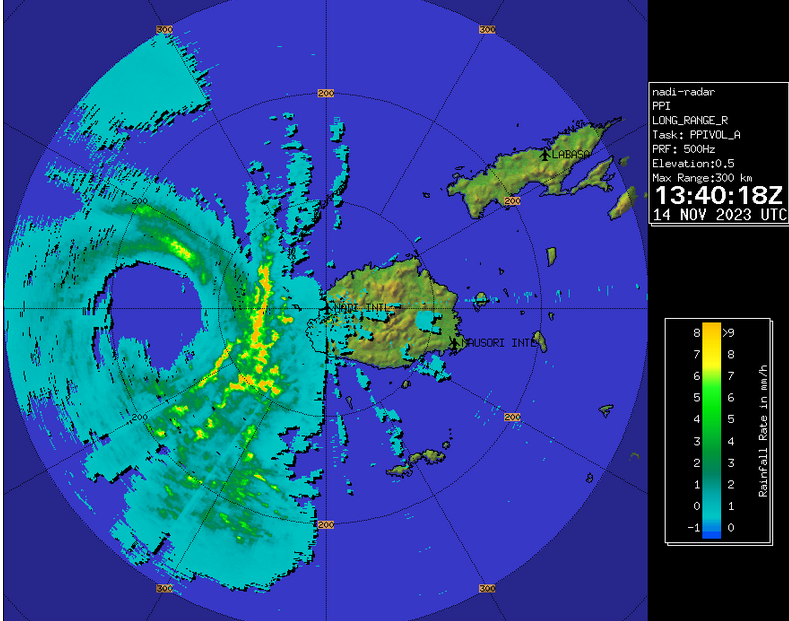Tropical Cyclone Seru strengthened to the equivalent of a hurricane/typhoon over the South Pacific Ocean between Vanuatu and Fiji on Tuesday. At 10:00 a.m. EST on Tuesday the center of Tropical Cyclone Seru was located at latitude 18.2°S and longitude 171.3°E which put the center about 190 miles (310 km) east of Port Vila, Vanuatu. Seru was moving toward the south-southeast at 9 m.p.h. (15 km/h). The maximum sustained wind speed was 75 m.p.h. (120 km/h) and there were wind gusts to 90 m.p.h. (145 km/h). The minimum surface pressure was 985 mb.
Tropical Cyclone Seru rapidly intensified to the equivalent of a hurricane/typhoon over the South Pacific Ocean between Vanuatu and Fiji on Tuesday. The inner end of a rainband wrapped around the eastern and southern sides of the center of Seru’s circulation. Other bands of showers and thunderstorms were revolving around the center of Tropical Cyclone Seru. Storms near the center of Seru generated upper level divergence that pumped mass away from the tropical cyclone. The removal of mass caused the surface pressure to decrease.
The inner core of Tropical Cyclone Seru was exhibiting more organization. Winds to hurricane/typhoon force extended out 20 miles (30 km) from the center of Seru’s circulation. Winds to tropical storm force extended out 160 miles (260 km) from the center of Tropical Cyclone Seru.
Tropical Cyclone Seru will move through an environment favorable for intensification during the next 24 hours. Seru will move over water where where the Sea Surface Temperatures are near 28°C. It will move under the axis of an upper level ridge that extends from Vanuatu to Fiji. The upper level winds are weak near the axis of the ridge and there will be little vertical wind shear. Tropical Cyclone Seru will intensify during the next 24 hours.
Tropical Cyclone Seru will move around the southwestern part of a high pressure system over the South Pacific Ocean. The high pressure system will steer Seru toward the south-southeast during the next 24 hours. On its anticipated track, Tropical Cyclone Seru will remain between Vanuatu and Fiji.
Elsewhere over the South Pacific Ocean, Tropical Cyclone Rae was weakening rapidly as it passed southwest of Tonga. At 4:00 a.m. EST on Tuesday the center of Tropical Cyclone Rae was located at latitude 24.1°S and longitude 178.0°W which put the center about 310 miles (500 km) southwest of Nuku Alofa, Tonga. Rae was moving toward the south-southeast at 13 m.p.h. (21 km/h). The maximum sustained wind speed was 70 m.p.h. (110 km/h) and there were wind gusts to 85 m.p.h. (135 km/h). The minimum surface pressure was 988 mb.

